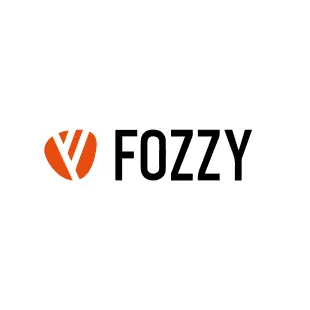Outlook of 2023: AI chatbots in the healthcare industry

Patients may lose trust in healthcare experts as they come to trust chatbots more. Second, putting too much faith in chatbots could put the user at risk for data hacking. Even if the use of AI chatbot services is less popular, patients frequently suffer because of shortcomings in the healthcare system. Remote Patient Monitoring (RPM) solutions, along with the Internet of Medical Things (IoMT), is transforming the healthcare industry. A remote or home patient monitoring system helps leverage digital technologies to offer personalized care and attention to patients. The process of developing an online chatbot for healthcare is a complex one and requires significant expertise in multiple areas.
- Chatbots aren’t meant to replace doctors or nurses, but they will make the whole patient care experience a lot simpler and faster.
- By using data collected by chatbots, insurers and hospitals can work together to quickly process claims and detect fraud.
- While outdated and low-security methods of communication are definitely on their way out, a secure messaging app is the need of the hour.
- As researchers uncover new symptom patterns, these details need to be integrated into the ML training data to enable a bot to make an accurate assessment of a user’s symptoms at any given time.
- Just as effective human-to-human conversations largely depend on context, a productive conversation with a chatbot also heavily depends on the user’s context.
- The bot can then interpret during consultations and appointments, eliminating language issues.
Social messaging chatbots can sell and process orders, track order information, and answer frequently asked questions (FAQs). It cuts down a lot of costs for online businesses and also offers instant interaction to users. The voice-enabled type of chatbot makes personalized experiences for users. To make conversational interfaces even more vernacular, businesses are now using voice-based chatbots or voice bots.
What does the process look like?
If you are considering chatbots and automation as part of your innovation plan, take time to put together a solid strategy and roadmap. If you are new to the process, reach out for help to start on the right path. For example, IBM’s Watson for Oncology examines data from records and medical notes to generate an evidence-based treatment plan for oncologists [34].
Newer therapeutic innovations have come with a heavy price tag, and out-of-pocket expenses have placed a significant strain on patients’ financial well-being [23]. With chatbots implemented in cancer care, consultations for minor health concerns may be avoided, which allows clinicians to spend more time with patients who need their attention metadialog.com the most. For example, the workflow can be streamlined by assisting physicians in administrative tasks, such as scheduling appointments, providing medical information, or locating clinics. Traditional medical chatbots use AI and natural language processing to predict user intent and provide appropriate responses (Chow et al., 2023).
#2. Sales or Lead Generation Chatbots
Healthcare chatbots have been demonstrated to increase patient satisfaction and drastically cut down wait times. Hence it should come as no surprise that many healthcare organizations are thinking about integrating them into their operations. Due to healthcare chatbots, doctors and patients can now converse more efficiently than ever. A Healthcare bot can also help with patient education by supplying details on procedures, drugs, and other facets of medical care. Chatbots in the healthcare sector save professionals a tonne of time by automating all of a medical representative’s mundane and lower-level duties.
Chatbot Systems Using AI May Feasibly Provide Access to … – AJMC.com Managed Markets Network
Chatbot Systems Using AI May Feasibly Provide Access to ….
Posted: Sun, 19 Mar 2023 07:00:00 GMT [source]
There will be some HIPAA and privacy difficulties for jumping before tech like that becomes a usual place. Undoubtedly these types of client and administrative service functions are simply on the horizon.
Some obstacles on the path to ChatGPT becoming a medical chatbot
With chatbots, less time is spent on phone calls or paying for receptionists’ wages. However, they are instrumental in US healthcare since they make it simpler for clinicians to access and modify patient information as needed. And without even a single line of code, you can create your own chatbot and add it to the website. When the time comes for you to hunt for a chatbot solution for the healthcare industry, locate an experienced provider of healthcare software, such as Remotestate, and have the best option presented to you. One of the best uses of chatbots in the healthcare sector is automating medicine refills.
- These issues presented above all raise the question of who is legally liable for medical errors.
- After starting a dialogue, the chatbot extracts personal information (such as name and phone number) and symptoms that cause problems, gathering keywords from the initial interaction.
- Doctors will sometimes tell patients to keep a notebook and then return a week later.
- This provides patients with an easy gateway to find relevant information and helps them avoid repetitive calls to healthcare providers.
- A chatbot needs training data in order to be able to respond appropriately and learn from the user.
- Chat is a more limited version of a call-center conversation, with prefabricated conversations, automated responses and smart search results.
For doctors, chatbots prove to be beneficial as they can access the patient’s medical records in seconds. They are also able to check the prescriptions and the last check-up records immediately in the case of an emergency. Although chatbots are not able to replace doctors, they will reduce the workload by helping patients and delivering solutions to their issues. An AI-enabled chatbot is a reliable alternative for patients who are looking to understand the cause of their symptoms. On the other hand, bots aid healthcare experts to reduce caseloads, and because of this, the number of healthcare chatbots is increasing day by day.
Healthcare Chatbots Use Cases
AI chatbots in healthcare are the conversationalist type meaning they run on the rule of machine learning and AI development. Many healthcare experts feel that chatbots may help with the self-diagnosis of minor illnesses, but the technology is not advanced enough to replace visits with medical professionals. However, collaborative efforts on fitting these applications to more demanding scenarios are underway.
How many chatbots are there?
Editor's top picks – chatbot statistics
On Facebook Messenger alone, there are over 300,000 chatbots in operation. (Source: Venture Beat) Online retail stores have the highest rates of chatbot 'acceptance'. (Source: Invesp)
You might if your company is a huge enterprise with numerous queries and a rich customer database. Due to the complexity involved in setting up a hybrid chatbot, this tool will best cater to the needs of large businesses. But for aspiring companies that receive a small number of simple questions, there is no need to spend so much time and money on hybrid chatbots. Emergency Response chatbots are designed to assist people during medical emergencies.
Chatbots in Healthcare: Top 6 Use Cases & Examples in 2023
But bots with higher intelligence and maturity levels do not need the support of pre-programmed responses. For example, a Level 1 maturity bot will give automated responses to users’ questions without inferring what the user means. The right chatbot must be able to identify the intent of the user and what help the user requires. This helps determine what kind of chatbot will be able to achieve these goals. The pandemic has forced people to stay indoors because hospitals are full of patients suffering from extreme symptoms of COVID. You can even use a therapist assistant bot to manage appointments, etc., without human intervention.
And then, keep the chatbot updated with the latest medical knowledge and guidelines to ensure accuracy and relevance. Use encryption and authentication mechanisms to secure data transmission and storage. Also, ensure that the chatbot’s conversations with patients are confidential and that patient information is not shared with unauthorized parties. Implement appropriate security measures to protect patient data and ensure compliance with healthcare regulations, like HIPAA in the US or GDPR in Europe.
Key Use Cases for Medical Chatbots in Healthcare
Companies collect a wide range of information from their customers, encompassing personal data, engagement data, behavioral data, and financial information. Personal data includes contact details, residential information, and government-issued identification…. Chatbots also helped out during the pandemic by doing some contact tracing work.
So, instead of creating surveys that patients never answer, healthcare facilities can receive feedback using conversational AI. Strange as it may sound, some AI medical chatbots are trained to offer assistance for some mental health issues because of their ability to simulate human conversation. So, they can offer some patients cognitive behavioral therapy and relaxation and meditation tips. Natural language search – the little search bar that takes complete questions and answers them with smart results – is also growing in popularity. Both techniques are perfect for consumers who are looking to “have a conversation” rather than read through lengthy research.
Step 7. Provide Continuous Monitoring and Maintenance:
AI and healthcare integration have cut down on human labor to analyze, access, and offer healthcare professionals a list of possible patient diagnoses in a few seconds. AI-based chatbots in healthcare are created with the help of natural language processing (NLP) and this helps the chatbots to process the patient’s inputs quickly and generate a response in real-time. The main job of healthcare chatbots is to ask simple questions, for instance, has a patient been experiencing symptoms such as cold, fever, and body ache? From this, the chatbot technology analyzes the inputs of the users and offers solutions through a text or voice message.
What are the 4 types of chatbots?
- Menu/button-based chatbots.
- Linguistic Based (Rule-Based Chatbots)
- Keyword recognition-based chatbots.
- Machine Learning chatbots.
- The hybrid model.
- Voice bots.
